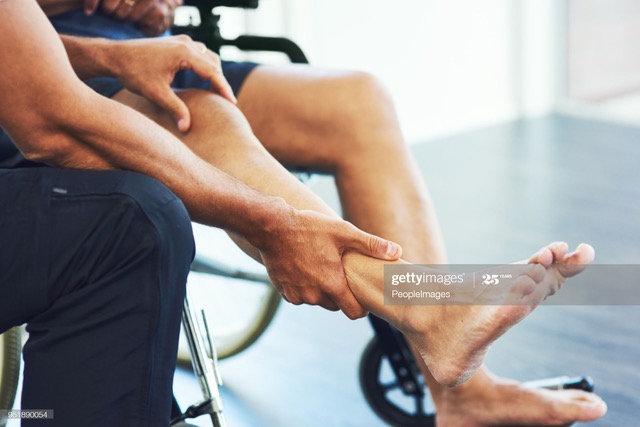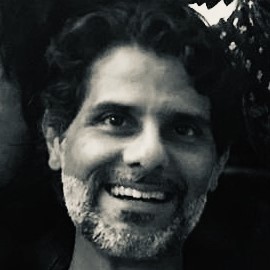On breaking a leg during a pandemic: Reflections of a doctor-turned-patient
Part III: After the surgery
By the time I got home after my day surgery, it was already midafternoon. I parked myself in the guest room downstairs as even the thought of hobbling up the staircase to my bedroom was too daunting.
The rest of the afternoon and evening went fine because my right ankle had been numbed well for the surgery and I didn't feel much pain. There was a deep dull throbbing sensation that turned up periodically but eased with repositioning of my foot. I lay in bed with my right leg elevated and managed to fall asleep.
When I woke up, I acclimated to my new room and bed. I watched TV for a bit, had a cup of tea, some snacks and then dinner soon after. The novelty of being in a new space in my own house made me forget the important discharge instructions and medications that the orthopods had sent me home with.
Although my well bandaged ankle felt cushioned and secured, the diverse pain sensations that I started feeling the moment the ankle nerve block wore out went from alpha to omega within seconds. Some parts of my foot felt like they were on fire, other parts started tingling, and the side of the ankle where the stitches were located felt like it was being stretched. For the readers who are involved in healthcare, you may recall from your medical, nursing or allied health education the importance of describing precisely not just the position and intensity of pain, but also its quality. For instance, is it piercing, stabbing, throbbing, burning, etc.? Mine was all of the above and more.
No matter what position I placed my right foot in, there was no relief. I quickly popped one tablet of the narcotic tramadol and two of the anti-inflammatory naproxen. I threw into that cocktail a tablet of melatonin to help me sleep, thinking that would be one way for me to forget the misery.
However, despite practicing polypharmacy, I was fated to suffer that pain. I tossed and turned, writhed in agony, tried deep breathing to help distract myself, moaned, groaned, and even cried to vent my pent up emotional and physical pain and frustration. I wanted to feel sorry for myself. And I did. I wanted to feel vulnerable. And I did.
'Post-operative night zero' (as per surgical nomenclature) was hell for the most part and I must have passed out from pain at some point because I recall waking up early morning with an intense urge to pee. The pain had considerably lessened by then. Thereafter I ensured that I continued taking my pain meds in a scheduled manner . That was the only way to control the pain cycle without having to worry about any breakthrough pain requiring additional doses of medications. The next few days were spent reaching an equilibrium of sorts whereby my pain could be overcome if not transcended entirely by a combination of pharmaceutical and non-pharmaceutical (distraction through deep breathing, music, Netflix, writing, art, etc.) means.
However, in my quest to focus more on the pharmaceutical side of things for the initial post-surgical period,I forgot the impact that recurrent narcotic usage can have on gut motility. By the time I realized that, I hadn't had a bowel movement in almost five days. The struggle to cleanse one's constipated bowels in the backdrop of therapeutic levels of narcotics in the blood is a story for another day. An hour on the toilet ravaged by intense bouts of abdominal cramping and colicky pain was enough to make me forget my ankle pain.
Over the course of those first few days right after the surgery, there were some realizations too. For instance, things that one takes for granted, like taking a bath, become so tricky when you are one-legged. But when your partner and spouse of over twenty years is there in the bathroom with you to help you shower safely, you feel blessed to bear witness to such a dynamic.
The most important aspect of the subsequent days (as a cripple) were periods of profound reflection, especially about my instantaneous transition from high mobility to complete immobility. I was at a loss to explain how I managed to injure myself to the extent that I needed surgical intervention.
How long will I have to go through rehabilitation to start walking again? I wondered, knowing well that running and doing Zumba were not possible anytime soon
Would I ever get to be normal again? I asked myself rhetorically, knowing well that the COVID-19 pandemic had already changed the concept of normalcy for everyone world over.
Then there were periods of intense guilt for not being with my ER team at the frontline in these stressful times when all hands (and feet) were needed on deck. Guilt for going on medical/surgical leave when there was so much work to be done.
Needless to say, I'm not out of the woods as yet. I still haven't been to the orthopods for post-surgical follow up, at which point my stitches shall be removed and I shall be assessed for resumption of weight bearing.
However, I'm getting better at managing my emotions; being in the here and now, taking one day at a time, empathizing with myself, and just being okay with any and all outcomes.
Epilogue:
Going insane during the COVID-19 pandemic? 
Resort to exercise and Zumba (to regain sanity) - Go break a leg - Get bio-hacked (surgically-mediated insertion of hardware in the leg).
Per that chain, things seemed to have occurred linearly and the outcome was predictable. But even if the sequence was completely unpredictable and random, sometimes all it takes is a single moment to turn your life awry. It makes you rethink and recalibrate your life, especially given these chaotic times. My recent accident and the doctor-turned-patient transition has certainly given me much room to reflect. During this broken leg crisis, made harder by COVID-19-mediated lockdown, my family, friends and colleagues have been superb pillars of strength. They helped me understand that in the final analysis the thing that is of real value – what heals – is love.
DISCLAIMER: Copyright belongs to the author. This blog cannot be held responsible for events bearing overt resemblance to any actual occurrences. The views expressed do not necessarily reflect the views and policies of CCIT or AKU.
About the Author
 Asad I. Mian MD PhD is a pediatrician, ER physician, and researcher by profession, at the Aga Khan University. His proclivity for writing is his means of creative exploration and expression. His articles on health, education, children, humour and popular culture have appeared in newspapers in the US and in Pakistan. Other than the Biloongra series of bilingual books for children, he has authored 'An Itinerant Observer' a book of brief narratives first published in the US in 2014 which will be reprinted by Bookgroup in Pakistan in June 2020. He can be reached on Twitter @amian74 and he blogs at anitinerantobserver.blogspot.com.
Asad I. Mian MD PhD is a pediatrician, ER physician, and researcher by profession, at the Aga Khan University. His proclivity for writing is his means of creative exploration and expression. His articles on health, education, children, humour and popular culture have appeared in newspapers in the US and in Pakistan. Other than the Biloongra series of bilingual books for children, he has authored 'An Itinerant Observer' a book of brief narratives first published in the US in 2014 which will be reprinted by Bookgroup in Pakistan in June 2020. He can be reached on Twitter @amian74 and he blogs at anitinerantobserver.blogspot.com.

